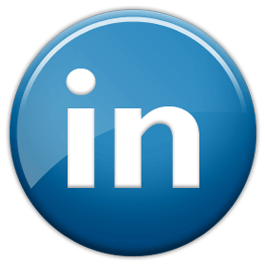Are You Making This Basic LinkedIn Mistake?
Are you making the mistake of having a LinkedIn network mainly made up of friends, colleagues, and industry peers?
It’s easy enough to do. It’s the path of least resistance.
But it’s not smart.
Because building a LinkedIn network exclusively or mainly of friends, colleagues and peers. means we are building a network of people who, generally speaking, will not become our customers.
If we want to make the most of our investment of time and – for those with Premium accounts and/or advertising with LinkedIn – money, we need to get seriously strategic about identifying the people we need in our network and putting in the work of inviting them and building relationships with them.
Before I get to how to do that, I have to admit I’m not without fault here.
I know and teach the theory of how to build an effective network on LinkedIn, especially the need to build connections and relationships with potential customers and with people who are likely to be able to give us referrals to potential customers. But I’ve started to do some evaluation of my network and I can see I have plenty of work to do if I’m to really walk my talk on this.
That current evaluation was prompted by a wakeup call I had recently, when I did a search to identify people in my network in C-level positions in the mid-market, and in a specific geographical area. I found I had no shortage of colleagues and peers in that geographical area, many of them in some sense my competitors. But the number of first level connections who met the other parameters of my search was much smaller than I’d anticipated.
Then yesterday I had a useful reminder of the need to take action on this now, not next week or next month, when a colleague told me she’d had a similar experience to my wakeup search result, of doing a LinkedIn search and finding plenty of colleagues but not enough potential clients.
In part I blame LinkedIn.
When we think back to what happened when we first joined LinkedIn, it’s understandable that our initial LinkedIn network would reflect our then existing circles of friends and colleagues. You may remember that LinkedIn facilitated that by making it dead easy to import our contact lists from email, Google contacts and so on and to invite them en masse to connect with us on LinkedIn.
Nice. Convenient. Instant network.
So where was the incentive to move beyond that existing network comfort zone?
If you were a recruiter or in sales, especially B2B sales, there was probably quite a bit of incentive, but from discussing this with many professionals over the past ten or so years, my sense is that, by and large, and with the likely exception of the aforesaid recruiters and salespeople, there has been at best an incremental expansion of the “comfort zone” network, but there has not been a strong incentive to build a network of potential customers and referrers, outside that zone.
LinkedIn’s advice on connecting might also prompt an unduly cautious approach
Some people are naturally cautious about making new connections on LinkedIn. That’s not a bad thing in itself. After all, with over 364,000,000 members on LinkedIn, there are likely to be quite a few bad apples. And then there are the fake profiles.
Add to that the guidance from LinkedIn on exercising caution in our inviting – as in their advice “We recommend you only connect with those you know and trust”. Not exactly encouraging for those of us who want to spread our networking wings a bit wider than that!
My personal view – hunch if you will – is that those many people who have used LinkedIn profitably for their business at any time over the past ten or more years have not restricted their connection scope in that way.
My strong view is that you can take sensible precautions and still grow your network more ambitiously than is possible if you just stick only to the “those you know and trust” idea.
There is no doubt in my mind that we do need to take practical steps to mitigate the risk of making inappropriate connections.
But if we want to make the most of our membership of LinkedIn we need to expand our network and we need to find ways of connecting with potential customers and referrers who are currently outside our existing networks – i.e. by definition people we don’t know or trust – yet.
In my next post on this topic, hopefully within a week from now, I will outline a strategic approach to that task, including steps we can take to avoid including imposters and other ne’er-do-wells in our networks.
In the meantime, I’ll be looking at my existing network and seeing where some of the gaps are in terms of the kind of people I want to connect with in order to grow my business.
If you like the idea of doing something like that for yourself, don’t make it too complicated. Just make a few notes of the categories, industries and geographical locations of your ideal customers and/or referrers, then do some serious searching on your network to see who turns up – or doesn’t. If you know the kind of people you want to reach, and where, I guarantee you’ll soon start to see the gaps.
Then, like me, you’ll want to take some practical steps to turn those gaps into marketing opportunities.
Des Walsh
Business coach and digital entrepreneur. With coach training from Coachville.com and its Graduate School of Coaching, and a founding member of the International Association of Coaching, Des has been coaching business owners and entrepreneurs for the past 20 years. Over the same period he has also been actively engaged in promoting the business opportunities of the digital economy. He is a certified Neurolinguistic Programming (NLP) coach, and a certified specialist in social media strategy and affiliate marketing.



This is great and candid insight on how too many of us position ourselves on LinkedIn as well as a wonderful wake-up call to reposition our businesses and expertise sooner than later.
While I await next week’s post, I’ll take a genuine look at my connections and how I can expand my horizons for greater success. Thankfully, you’ve set a goal for me to make improvements.
Shirley
Thanks for your comment. Much appreciated. As is often the case, talking about the problem was easier than talking about solutions. However, I have now written and posted the follow up with some “how to’s”.